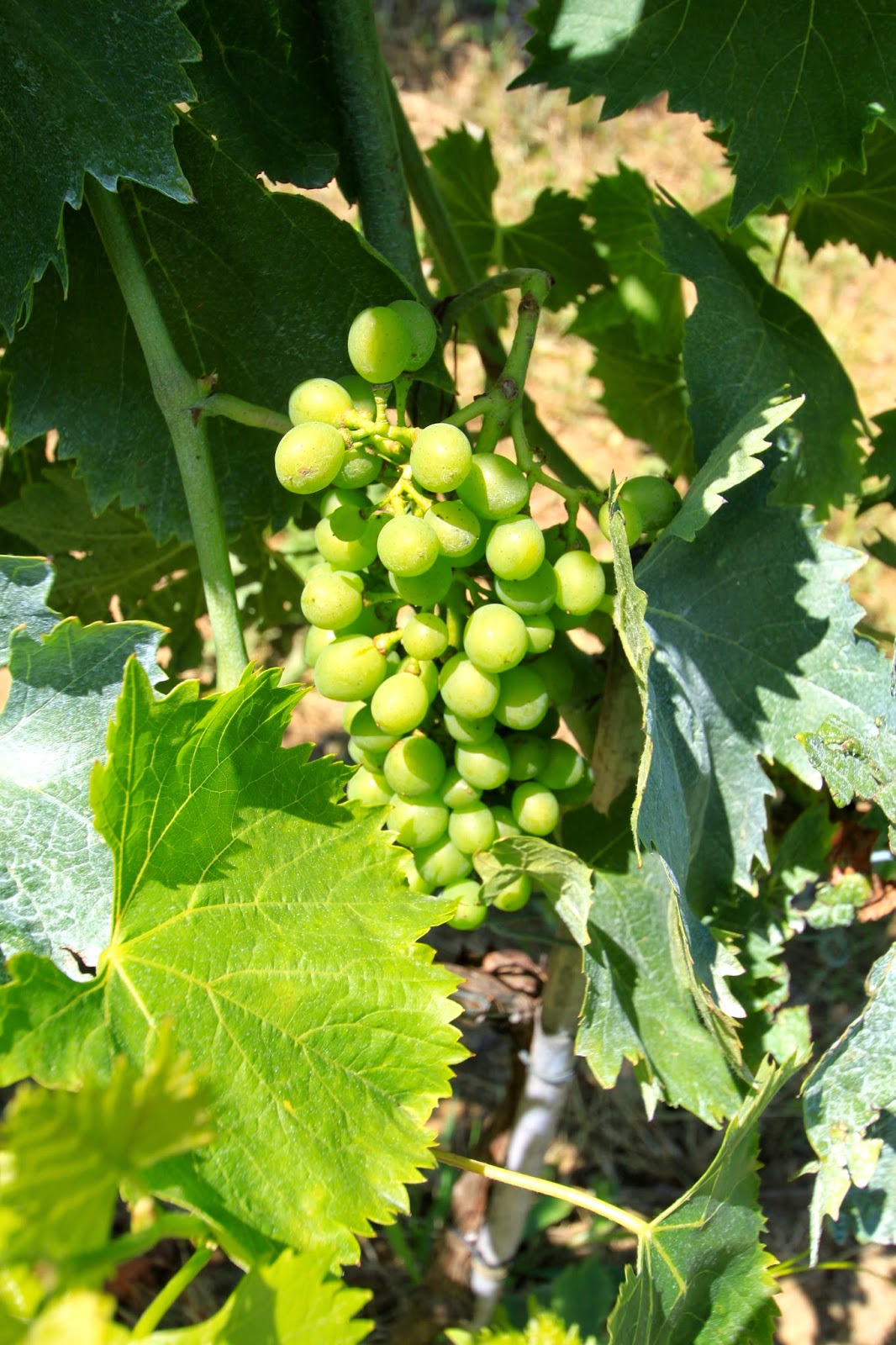July 16, 2014
Back on our 2005 trip, we made a connection with Lello Tinelli,
a private tour guide and all around perfect example of The Italian Man who operates from Siena. (Siena is our headquarters of choice when we visit Tuscany, but more on that in another post.) For nine years we have exchanged cards and emails with Lello, always with the promise of returning to Tuscany. He even visited us in California and went out to dinner with my extended family in 2008.
 |
| July 2005: Dad/Joseph, Sarah, Aunt Susan, Uncle Steve, Mom/Joanne, and Lello |
We booked two full days with Lello, incorporating a few requests but mostly leaving the itinerary to his discretion. As before, we couldn't have been happier with how our time was spent and know for certain that there is no way we could have recreated these experiences without an insider like Lello showing us the way.
 |
| in the van |
On Day 1, we left Siena for Montalcino, home of the
Brunello di Montalcino wine varietal. Montalcino is one of Tuscany's famous "hill towns," medieval walled cities that are perched all over the region. Lello dropped Janis, Joe, Julie and Val off in town to wander while my mom and I headed to
Podere il Cocco to enjoy some agriturismo and learn to make focaccia!
 |
| il Cocco |
 |
| il Cocco is both a winery and an agritourism center, offering stays in their B&B, prepared lunches, or weeks working on the farm and learning the art of Tuscan cooking in the kitchen (check out the prices - so reasonable!) |
There we met Imma, a traditional home cook in a line of home cooks stretching back generations. She joked that in her family the heirlooms weren't jewelry or fine china, but the wooden box used to let bread rise and her pizza paddle. Imma didn't speak much English or use exact recipes for anything, so Lello (a former pastry chef) did the translating and explained how and why we needed to use room temperature water in our dough and how to knead bread properly. (Imma's husband is also the head chef at one of the best restaurants in Montalcino.)
 |
| rolling out the dough for focaccia pizza |
 |
| dough hands |
 |
| raw loaves |
 |
| simple focaccia pizza |
 |
| all of our goodies (See the bread rising box on the right? It's at least a hundred years old.) |
 |
| Imma's outdoor stone oven (center left in the top pic of Il Cocco, behind the big bush) |
As our dough was rising, Lello retrieved our travel companions for lunch. We took a tour of the farm where Imma grows her own fruits, vegetables, and herbs and raises chickens, goats, pigs, and turkeys. When the animals ran to see "Mama," she just yelled at the chickens to go make eggs!
 |
| I've never seen eggplants growing before! |
Course after course came to the table, all home grown and hand made by Imma and her assistant Sylvia.
 |
| a toast of limoncello with Lello! |
 |
| fagioli (beans) and sausage; ratatouille (or ciambotta in Italian) |
 |
| penne bolognese |
There was also a chocolate pear cake and coffee ice cream and then, of course, limoncello and coffee. And this was in the afternoon and it was about 95 degrees outside. When we were thoroughly stuffed it was time to mosey next door to the winery, also called il Cocco, for our tour and tasting with Giacomo Bindi.
Giacomo is the owner and next generation of il Cocco winery and gave us probably the most thorough and personalized wine tour I've ever been on. He and Joe enjoyed swapping information about the similarities (and differences) between the ingredients and methods for making wine and beer. Giacomo also explained the distinctions between the different levels of wines available in Montalcino, from table wine to Brunello. He showed us how the grapes are grown, what he looks for throughout the season, where the wine is bottled (by hand, up to 3000 bottles per day), and how he applies the labels individually.
 |
| a groupie with Giacomo in one of the fermentation tanks |
After our feast and wine tasting (during which we were poured full glasses, not tasters, btw), we were properly happy (read: full and sloshed) and ready for our last official stop: Pienza.
Pienza is known for the production of pecorino cheese, named because it is made from the milk of the
pecora, or sheep.
 |
| Tuscany |
 |
| loving Italy! |
 |
| Joanne/Mom enjoying ceramic shopping |
 |
| my cat lover will find cats anywhere |
 |
| Val prefers dogs, but this cat will do |
 |
| Janis and her kids, Joe and Julie |
One of the added benefits of traveling with Lello is the leisurely driving through the Tuscan countryside and the ability to stop whenever you want a picture!
 |
| one of the most famous sites in Tuscany, this patch of cypresses is photographed in every season |
 |
| We were even taken by the rolling wheat fields with their human-height barrels |
Believe it or not, this was just day one of our Tuscan exploration! Day two is just as full of deliciousness in Montepulciano, Cortona, and more countryside.















































